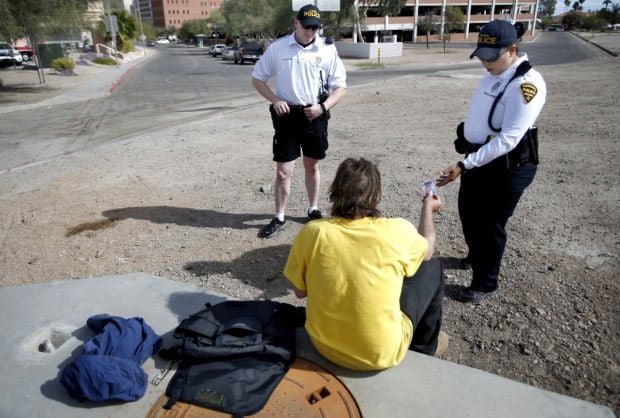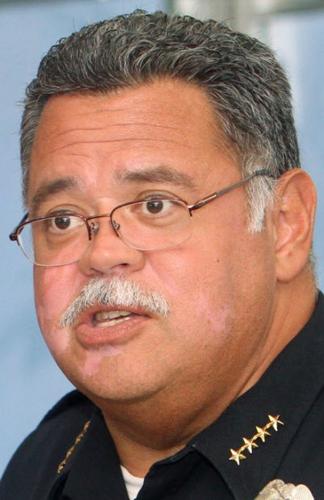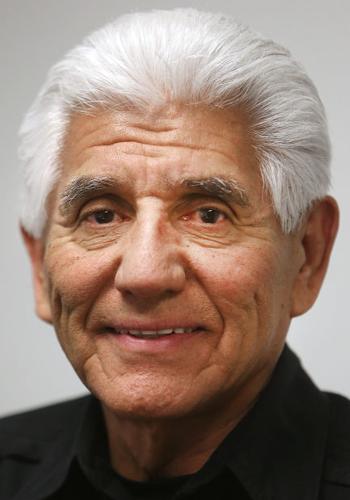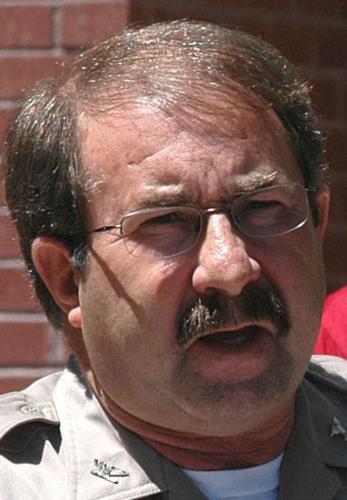Pima County Sheriff’s Department
- Who is in charge:
- Clarence Dupnik
- Where he stands:
- “We’ve been enforcing the federal law since I’ve been a cop for 55 years, and we’ve been enforcing the fed law from day one. That hasn’t changed. Some agencies weren’t doing that.”
- How it’s documented:
- Uses a “UDA” circumstance code to identify cases involving unauthorized immigrants.
Tucson Police Department
- Who is in charge:
- Roberto Villaseñor
- Where he stands:
- “There’s a lot of us that were imploring that this needed to be looked at the federal level, but when they upheld it and allowed that one section to stand, Section 2B, I have no choice. I have to enforce it the way the law was written and that’s where it’s causing problems.”
- How it’s documented:
- Created a form the dispatcher is supposed to fill out when an officer asks for an immigration check.
Oro Valley Police Department
- Who is in charge:
- Daniel Sharp
- Where he stands:
- The department developed racial profiling and immigration-related standards in 2004. “That’s something that had been on our radar screen for a long time, so when SB 1070 came along, we already had the protocols in place.”
- How it’s documented:
- Classifies most referrals and assists to immigration authorities as “other agency assists,” a category that doesn’t include cases where a more serious crime was suspected because the system codes incidents by worst offense.
Marana Police Department
- Who is in charge:
- Terry Rozema
- Where he stands:
- “We have a different job than what immigration does, and a focus on that job is our primary concern. But I don’t think SB 1070 as it exists has in any way negatively impacted us from our primary focus.”
- How it’s documented:
- Created a log in January to track inquiries related to people who are arrested but not booked into jail to ensure the agency checks the status of everyone it arrests. At the same time, created a code for cases involving foreign nationals.
South Tucson Police Department
- Who is in charge:
- William Lackey
- Where he stands:
- “We’re doing the same things; we’re just doing it in a glass house.”
- How it’s documented:
- Calls are classified according to highest FBI clearance code.
Santa Cruz County Sheriff’s Office
- Who is in charge:
- Tony Estrada
- Where he stands:
- “I think Senate Bill 1070 has had a major impact. Maybe not so much for law enforcement but for the Hispanic community in that it kind of sets a label that if you are Hispanic you are suspect or will be treated differently.”
- How it’s documented:
- Classifies most referrals and assists to immigration authorities as “other agency assists federal,” a category that doesn’t include cases where a more serious crime was suspected because the system codes incidents by worst offense.
Sahuarita Police Department
- Who is in charge:
- John Harris
- Where he stands:
- “The only impact I see is on the positive side where the feds have given us extra money to work with Stonegarden.” (Stonegarden is a federal program aimed at enhancing border security by paying local officers to work overtime shifts and providing money to agencies to buy related equipment such as radios and night-vision goggles.)
- How it’s documented:
- Classifies most referrals and assists to immigration authorities as “assist other agency — federal,” a category that doesn’t include cases where a more serious crime was suspected because the system codes incidents by worst offense.
Nogales Police Department
- Who is in charge:
- Derek Arnson
- Where he stands:
- “I know the value of immigrants and what they bring to this country. I also know the value of secure borders.”
- How it’s documented:
- Classifies most referrals and assists to immigration authorities as “other agency assists,” “UDAs,” and “Border Patrol assist.” Cases where the person wasn’t cited or given a warning are only documented in the call notes.
Pinal County Sheriff’s Office
- Who is in charge:
- Paul Babeu
- Where he stands:
- Didn’t agree to an interview but was one of the most vocal advocates and founder of a sheriff’s group created to help fight lawsuits that sought to overturn the law.
- How it’s documented:
- Classifies most referrals and assists to immigration authorities as “other agency assists,” a category that doesn’t include cases where a more serious crime was suspected because the system codes incidents by worst offense.
Cochise County Sheriff’s Office
- Who is in charge:
- Mark Dannels
- Where he stands:
- “Maybe in Maricopa or northern parts of the state 1070 is more beneficial to them. Here, like any law, the law is there to support law enforcement as another tool for state officers and deputies in the state.”
- How it’s documented:
- Classifies most referrals and assists to immigration authorities as “other agency assists,” a category that doesn’t include cases where a more serious crime was suspected because the system codes incidents by worst offense.
Arizona Department of Public Safety
- Who is in charge:
- Robert Halliday
- Where he stands:
- He didn’t agree to an interview with the Star, but has in the past said he didn’t want officers to change what they do. He has expressed concern about how the required inquiries might affect officers assigned to rural areas without cellphone coverage or other officers nearby.
- How it’s documented:
- When an officer suspects someone is in the country illegally, he fills out a form with details of the stop.
Douglas Police Department
- Who is in charge:
- Kraig Fullen
- Where he stands:
- “If we don’t have the public’s trust, we can’t do our jobs. Traffic enforcement in general has an impact on that, and safety is weighed against wanting people to come back.”
- How it’s documented:
- Some calls to Border Patrol are documented in the agency’s call notes or radio log, but these records can’t be easily searched. Other calls are documented in incident reports, but those are not all given the same classification.
Yuma County Sheriff’s Office
- Who is in charge:
- Leon Wilmot
- Where he stands:
- “There hasn’t been any kind of changes as far as our operations here that weren’t already in effect years ago.”
- How it’s documented:
- Classifies most referrals and assists to immigration authorities as “assist federal agency,” a category that doesn’t include cases where a more serious crime was suspected because the system codes incidents by worst offense.
Arizona Daily Star










